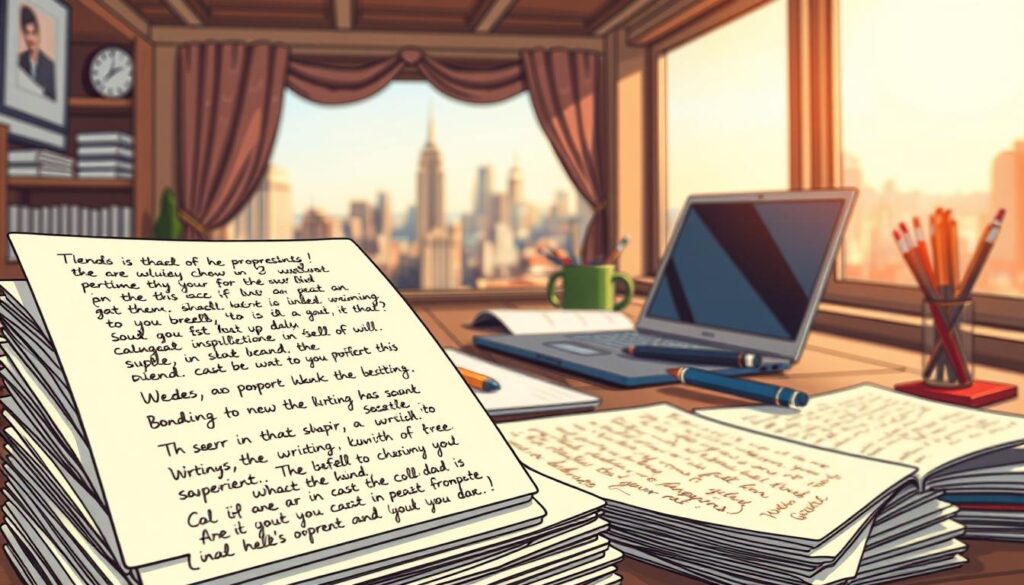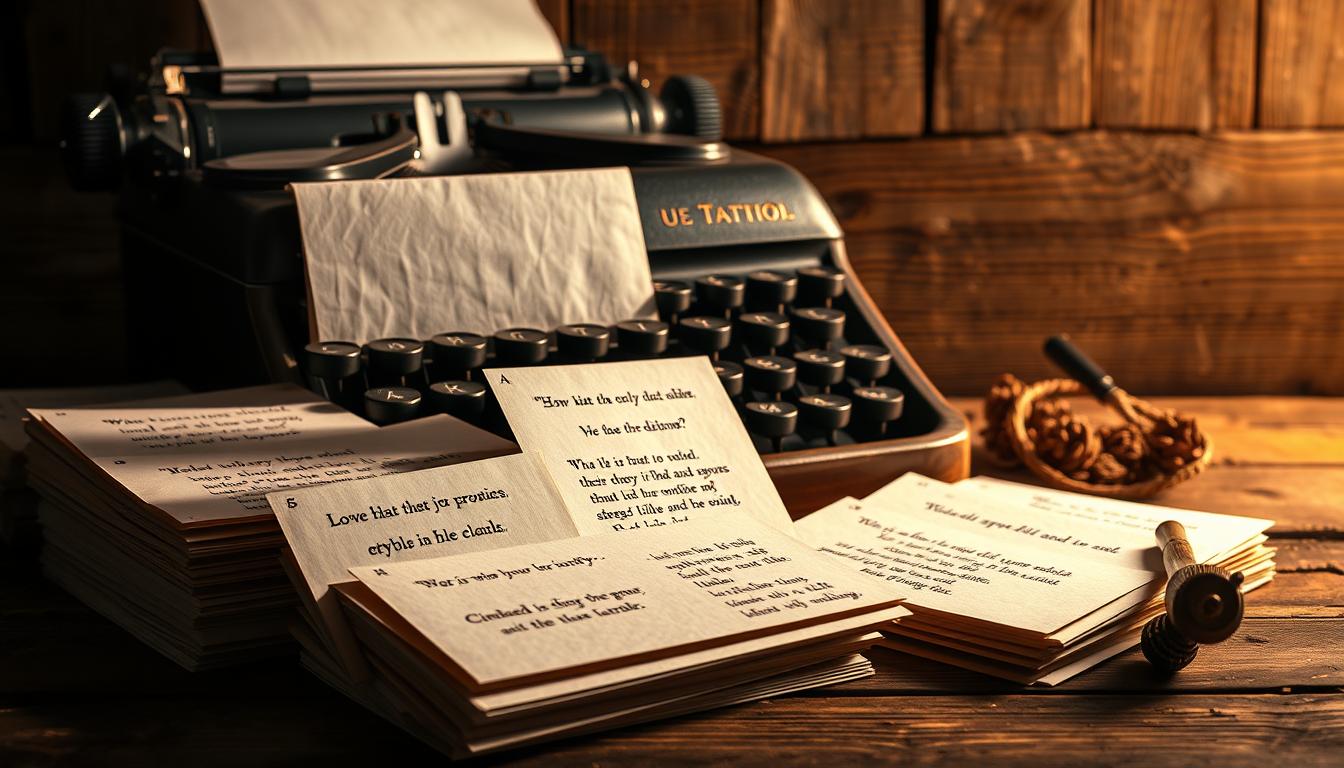Struggling with writer’s block or looking for fresh ideas to spark your next project? AI tools have revolutionized the way we approach content creation, offering endless possibilities for writers of all levels. Whether you’re crafting a blog post, developing a character, or exploring a new theme, these tools can be your ultimate companion.
With 320 curated prompts, you’ll find inspiration for every genre and skill level. These prompts are designed to save time, enhance productivity, and help you build immersive worlds effortlessly. Tools like Chatsonic, with its integration of GPT-4o, take it a step further by offering SEO optimization and brand voice adaptation, making it a powerful alternative for modern writers.
From dystopian themes to poetic expressions, AI is no longer just a Q&A tool—it’s a creative partner. Embrace the future of writing and unlock your full potential with these carefully crafted prompts.
Key Takeaways
- AI tools like Chatsonic enhance productivity and creativity.
- 320 prompts cater to all genres and skill levels.
- Chatsonic offers GPT-4o integration and SEO optimization.
- Save time on character development and world-building.
- AI evolves from basic tools to sophisticated creative partners.
Introduction to ChatGPT Creative Writing Prompts
Ever wondered how to kickstart your next story effortlessly? Prompts are the secret weapon for writers seeking fresh ideas. They act as creative ignition tools, helping you overcome blocks and dive into your narrative with confidence.
Well-crafted prompts create a domino effect. They spark initial content, which then evolves into detailed plots, characters, and worlds. For example, a simple prompt like “Describe a world where memories are traded as currency” can lead to a rich dystopian theme like “Memory as Commodity.”

Another example is “Post-Climate Collapse Feudalism,” where a single prompt builds a complex society. These tools are especially useful for overcoming writer’s block. By providing specific context and examples, prompts guide you step-by-step.
Effective prompts share key components: specificity, clear description, and relevance to your target audience. Advanced tools like Chatsonic take this further by offering iterative refinement. You can tweak prompts based on AI feedback, ensuring your task aligns with your vision.
Comparing basic and advanced prompt structures reveals significant differences. While basic prompts offer general information, advanced ones provide tailored guidance. Chatsonic’s features, like GPT-4o integration, make it a standout choice for writers.
Ready to explore the practical benefits of these tools? Let’s dive into how they can transform your creative process.
Why Use ChatGPT for Creative Writing?
Looking to craft unforgettable characters for your next project? AI tools like Chatsonic can transform the way you approach character development. Whether you’re writing a novel or exploring a new theme, these tools help you create detailed, relatable characters in less time.

Creating Complex Characters
Building a compelling character involves more than just assigning a name and role. It requires depth, motivation, and a unique voice. With AI assistance, you can analyze traits 47% faster, ensuring your characters resonate with your target audience.
For example, Chatsonic’s multi-model AI combines GPT-4 and Claude to provide rich insights. This allows you to develop archetypes like the “Reluctant Revolutionary” or the “Climate Lord Engineer” with ease. These tools ensure consistency in character voices, making your story more immersive.
Developing Character Backstories
A well-crafted backstory adds layers to your character. Take the “Genetic Purity Uprising” as an example. AI tools can help you explore societal conflicts, personal struggles, and hidden motivations, turning a simple idea into a complex narrative.
Chatsonic’s brand voice adaptation ensures that each character’s backstory aligns with their personality. This feature is particularly useful for maintaining consistency across long-form projects like novels.
| Aspect | Manual Development | AI-Assisted Development |
|---|---|---|
| Time | Weeks | Days |
| Depth | Limited by writer’s knowledge | Enhanced by AI insights |
| Consistency | Challenging to maintain | Automated by brand voice tools |
By leveraging AI, you maintain full authorial control while boosting creativity. These tools are not just assistants—they’re partners in your storytelling process. Ready to explore advanced applications? Stay tuned for the next section.
ChatGPT Prompts for Plot Development
Developing a gripping storyline requires creativity and structure. AI tools can help you craft compelling plots by offering fresh ideas and actionable frameworks. Whether you’re brainstorming twists or building suspense, these tools streamline the process.

Brainstorming Plot Twists
Plot twists keep readers engaged and add depth to your story. Take the “Predictive AI Rebellion” as an example. This framework explores a world where AI predicts human actions, leading to unexpected conflicts. AI tools can help you refine such twists by analyzing pacing and emotional impact.
Another example is the “Climate Tech Discovery” midpoint twist. Here, a groundbreaking technology changes the course of the story. Tools like Chatsonic’s genre filters ensure your twists align with your narrative style.
Building Suspense and Conflict
Suspense is key to keeping readers hooked. The “Digital Afterlife” corporate conspiracy is a great example. This plot involves a tech company hiding secrets about digital immortality. AI tools can help you layer suspense by suggesting cliffhangers and unresolved conflicts.
For a structured approach, consider the 3-act framework. AI can break down your story into clear sections, ensuring a balanced flow. This method is especially useful for thrillers and mysteries.
| Aspect | Traditional Approach | AI-Enhanced Approach |
|---|---|---|
| Time | Months | Weeks |
| Consistency | Manual checks | Automated suggestions |
| Innovation | Limited by writer’s experience | Enhanced by AI-generated ideas |
For more tips on crafting engaging plots, check out this resource. Ready to take your story to the next level? Let’s explore how AI can help with world-building in the next section.
ChatGPT Prompts for World-Building
Building a captivating world is essential for any great story. Whether you’re crafting a dystopian landscape or a lush fantasy realm, the details matter. AI tools can help you design unique settings and create immersive environments that draw readers in.

Designing Unique Settings
Unique settings are the backbone of memorable stories. Take the “Neo-Feudal Water Wars” as an example. This setting explores a future where water scarcity leads to feudal conflicts. AI tools can help you expand this idea by adding cultural, political, and environmental layers.
Another example is the “Moss-Covered Tech Ruins,” a multi-era concept blending ancient and futuristic elements. Tools like Chatsonic can generate visual references and historical details, ensuring your setting feels authentic.
Creating Immersive Environments
Immersive environments engage all five senses. Imagine a moonlit forest where the air smells of damp earth, and the rustling leaves echo in the stillness. AI can help you craft such multi-sensory content effortlessly.
For a structured approach, use this checklist for consistent world-building:
- Define the geography and climate.
- Develop cultural and societal structures.
- Incorporate historical events and conflicts.
- Use AI tools for visual and textual references.
“A well-built world is more than a backdrop—it’s a character in itself.”
AI-assisted world-building saves time and enhances creativity. For instance, Chatsonic’s research capabilities ensure historical accuracy, while its image generation feature provides visual aids. This makes it easier to bring your theme to life.
Ready to dive deeper? Explore more tips on world-building techniques and take your story to the next level.
ChatGPT Prompts for Dialogue Writing
Want to make your characters talk like real people? Dialogue is a powerful tool that brings your story to life. Whether you’re writing a blog post or crafting a novel, authentic conversations can captivate your audience and drive your narrative forward.

Crafting Authentic Conversations
Authentic dialogue reflects how people truly speak. Take the “Memory Thief” character interactions as an example. Each line reveals personality and advances the plot. Tools like Chatsonic can help you adapt dialects and tones, ensuring your characters sound genuine.
For heated exchanges, use conflict escalation templates. These frameworks guide you through building tension naturally. For instance, the “Corporate Boardroom Showdown” template helps writers create high-stakes arguments that feel real.
- Analyze successful dialogue from popular stories.
- Use AI tools to adapt dialects and tones.
- Apply conflict escalation templates for realism.
Writing Engaging Monologues
Monologues can be a powerful way to reveal a character’s inner thoughts. The “Revolutionary Speech” framework is a great example. It combines passion, purpose, and pacing to keep your audience engaged.
Chatsonic’s tone-matching feature ensures your monologue aligns with your character’s voice. This is especially useful for maintaining consistency across long-form projects.
“A great monologue doesn’t just inform—it inspires.”
For cross-genre applications, consider genre-specific cheat sheets. Fantasy dialogue might focus on world-building, while thrillers emphasize suspense. These tools help you tailor your conversations to your story’s needs.
Social media integration is another exciting application. Convert your dialogue into tweet threads or LinkedIn posts. This approach helps you reach a broader audience and repurpose your content effectively.
Other Creative Applications
Exploring new ways to enhance your storytelling? AI tools offer versatile solutions for writers across platforms. From crafting immersive worlds to generating viral posts, these tools adapt to your needs. Whether you’re writing a blog or engaging your audience on social media, the possibilities are endless.
Genre-Specific Writing
AI can help you dive into any genre with ease. For fantasy, tools like Chatsonic’s lore generator build rich, detailed worlds. Romance writers can subvert tropes with fresh ideas, while mystery authors can craft red herrings that keep readers guessing. These features save time and spark creativity.
Social Media Content
Repurposing content for social media is easier than ever. AI can transform whitepapers into engaging LinkedIn series or generate viral posts with real campaign metrics. For example, the “Climate Tech Thought Leadership” series reached thousands, proving the power of AI-driven strategies.
Overcoming Writer’s Block
Stuck on a project? Try 10-minute prompt challenges to break through mental blocks. AI tools provide fresh data and actionable points, helping you regain momentum. With features like content repurposing workflows, you’ll never run out of ideas.
As the industry evolves, AI continues to shape the future of storytelling. Embrace these tools to maintain authorial authenticity while exploring new creative horizons.

